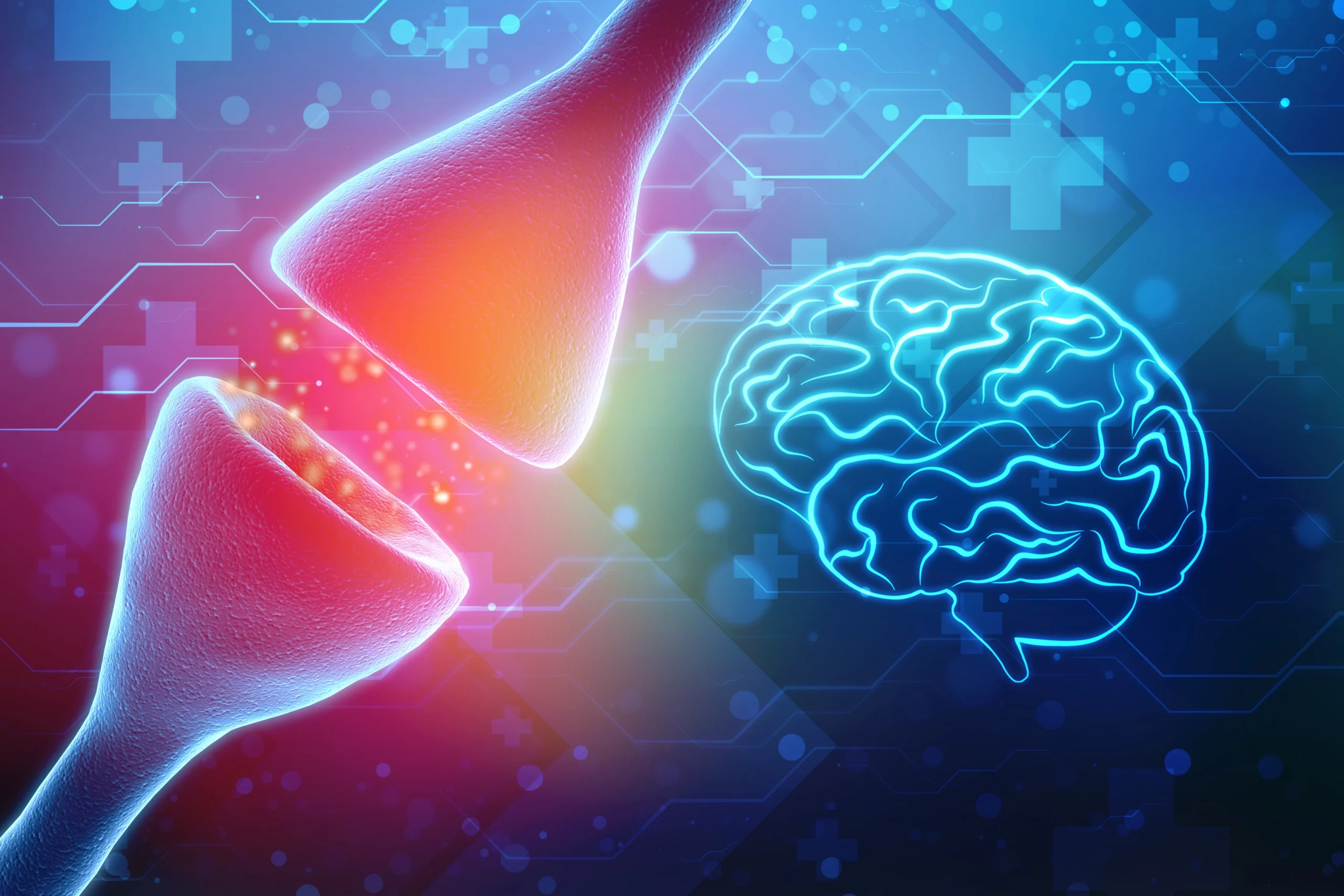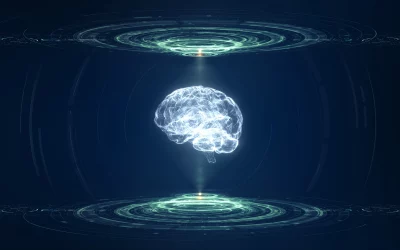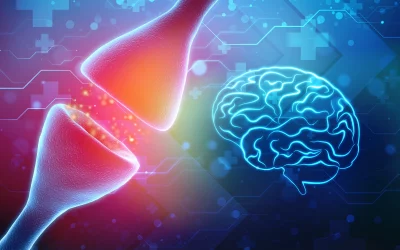Traumatic Brain Injuries claim the lives of around 50,000 individuals each year, while another 230,000 are hospitalized, with between 80,000 and 90,000 experiencing long-term impairment due to their TBI. Over 5.3 million individuals in the United States are disabled as a consequence of a traumatic brain injury.
Traumatic Brain Injury (TBI) may be caused by blunt, non-penetrating trauma or sharp trauma that pierces the head or skull. A TBI occurs when a head injury causes your normal brain functioning to be disrupted.
TBI may be caused by any force that impairs the brain’s normal function. It can vary in severity from a short unconsciousness to lengthy periods of unconsciousness or amnesia after an accident.
OVERVIEW of Traumatic Brain INjuries
Traumatic brain injury (TBI) is damage to the brain that occurs suddenly due to a blow or jolt to the head. Car or motorcycle accidents, falls, sports injuries and attacks are all common causes. Mild concussions to severe irreversible brain injuries are all possible injuries. While rest and medication may be sufficient for moderate TBI, severe TBI may need intense care and life-saving surgery.
Survivors of a brain injury may have long-term changes in their physical and mental skills, as well as their emotions and personalities. The majority of persons who have had a mild to severe TBI will need rehabilitation to recover and regain skills.
WHAT IS A TRAUMATIC BRAIN INJURY, AND HOW DOES ONE GET ONE?
Brain damage induced by a blow or jolt to the head from blunt or penetrating trauma is a traumatic brain injury (TBI). The main injury is the one that happens as a result of the hit. Primary brain injuries may affect a single lobe of the brain or the whole brain. The skull can be shattered. However, that isn’t usually the case.
After an accident, the brain bounces back and forth within the skull, producing bruising, bleeding, and nerve fiber shredding. The victim may be disoriented, forget what occurred, experience hazy vision and dizziness, or lose consciousness just after the event. The individual may seem to be in good health at first, but their condition might quickly deteriorate.
The brain suffers delayed damage after the first blow — it expands, pressing itself against the skull and restricting the flow of oxygen-rich blood. This is referred to as secondary injury, and it is often more serious than the main damage.
Bruising, bleeding, and shearing of the brain occur when the soft brain collides with the interior of the hard skull after a head collision.
The degree and mechanism of damage for traumatic brain injuries are categorized as follows:
Mild: the individual is awake, and his or her eyes are open. Confusion, disorientation, memory loss,
headache, and a momentary loss of consciousness are all possible symptoms. Sleepiness due to brain edema or hemorrhage, but still arousable.
Moderate: an individual feels drowsy, yet eyes are open to stimuli. Consciousness loss lasts anywhere from 20 minutes to 6 hours.
Severe: the individual is unconscious; even when stimulated, eyes do not open. Consciousness loss that lasts more than 6 hours.
Traumatic brain injuries can come in a variety of forms. A concussion is a minor head injury that may result in a momentary loss of consciousness but does not generally result in lasting brain damage.
A contusion, also known as a coup or contrecoup injury, is a bruise to a particular brain region produced by a blow to the head. The brain is affected immediately beneath the location of impact in coup injuries, whereas it is injured on the side opposite the impact in contrecoup injuries.
Diffuse axonal damage (DAI) is a cellular level shearing and stretching of nerve cells. When the brain travels back and forth within the skull, the nerve axons are ripped and damaged.
Axons, like telephone cables, link one nerve cell to another throughout the brain. Axonal damage alters the brain’s normal information transmission and may cause significant changes in a person’s wakefulness.
Traumatic Subarachnoid Hemorrhage (USA) is a kind of bleeding that occurs in the space around the brain. The cerebrospinal fluid (CSF) generally fills this area, acting as a floating cushion to protect the brain. Small arteries break at the first injury, resulting in traumatic SAH. The blood flows throughout the brain’s surface, generating extensive effects.
A hematoma is a blood clot caused by the bursting of a blood vessel. When blood leaves the regular circulation, it thickens and clots. The body’s natural mechanism of stopping bleeding is to clot. A hematoma might be tiny or massive, causing the brain to be compressed.
The symptoms differ depending on where the clot is located. An epidural hematoma is a blood clot that occurs between the skull and the brain’s dura lining. A subdural hematoma is a clot that occurs between the brain and the dura.
An intracerebral hematoma is a blood clot that develops deep into the brain tissue. The body reabsorbs the clot over time. Large clots are sometimes surgically removed.
Although TBIs are defined as single traumas, they are more likely to result from a mix of injuries, each of which may be of varying severity. This makes it difficult to answer questions like “what portion of the brain is hurt?” since more than one section of the brain is frequently affected.
The inflammatory reaction of the body to the underlying insult causes secondary brain injury. To repair the damage, more fluid and nutrients collect. This is a healthy and anticipated response in other parts of the body, and it aids the body’s healing.
However, brain inflammation may be harmful since the stiff skull restricts the area available for additional fluid and nutrients. Swelling of the brain raises head pressure, causing injury to areas of the brain that were not previously affected. Swelling occurs gradually and might take up to 5 days to appear after an accident.
WHAT ARE THE SIGNS AND SYMPTOMS?
The following symptoms may occur depending on the nature and location of the injury: Loss of consciousness
- Confusion and disorientation Memory loss/amnesia Fatigue
- Headaches
- Visual issues
- Irritability / emotional disturbances Depression
- Seizures Vomiting
- Poor attention/focus Sleep disruptions Dizziness/lack of balance
- Irritability / emotional disturbances
Diffuse traumas (such as concussions or diffuse axonal damage) usually result in a general loss of consciousness. Focused injuries (such as an ICH or a contusion) cause symptoms are
specific to the damaged brain region.
The brain is split into lobes and comprises three parts: the brainstem, cerebellum, and cerebrum. The table shows the brain lobes and their typical functioning and difficulties that might arise when they are injured. While a single portion of the brain may be injured, it is vital to remember that the brain operates as a whole through interconnecting its many components.
Every patient is different, and some injuries affect many areas or just a portion of the body, making it impossible to forecast which symptoms the patient may have.
WHAT ARE THE REASONS BEHIND THIS?
Falls, car or motorcycle accidents, vehicular accidents involving pedestrians, athletics, and attacks with or without a weapon are common causes.
WHO IS IMPACTED BY THIS?
Each year, 1.5 to 2 million adults and children in the United States suffer from a traumatic brain injury (TBI). The majority of persons with a head injury, roughly 1.1 million, will have a minor injury that does not need hospitalization. Another 235,000 people will be admitted to hospitals with moderate to severe brain injuries, with 50,000 of them dying.
WHAT IS THE PROCEDURE FOR MAKING A DIAGNOSIS?
When a person with a head injury is brought to the emergency department, physicians will try to discover as much as they can about his or her symptoms and how the damage happened.
The magnitude of the injury is promptly determined by assessing the person’s condition.
The Glasgow Coma Score (GCS) is a 15-point scale that assesses a patient’s state of awareness. Doctors evaluate the patient’s capacity to 1) open his or her eyes and 2) reply properly to queries about orientation (“What is your name?”).
“Hold up two fingers or give a thumbs up,” and 3) capacity to follow instructions (“Hold up two fingers or give a thumbs up”). The patient’s reaction to painful stimulation is tested if he or she is unconscious or unable to obey orders. To calculate the overall GCS score, a number is taken from each category and put together.
The score, which goes from 3 to 15, aids clinicians in determining if an injury is light, moderate, or severe. TBI with mild symptoms has a score of 13-15. A score of 9-12 indicates moderate TBI, whereas a score of 8 or less indicates severe TBI.
THE FOLLOWING DIAGNOSTIC IMAGING TESTS WILL BE CARRIED OUT:
A hematoma (blood clot) is seen beneath the bone (red arrows) and displacing the brain (yellow arrow) to the opposite side of the skull on a CT image.
Computed Tomography (CT) is a noninvasive X-ray that produces detailed pictures of the brain’s anatomical architecture. When a head injury occurs, a CT scan of the head is performed to promptly detect fractures, brain bleeding, blood clots (hematomas), and the degree of the damage. CT scans are utilized throughout the healing process to assess the progression of the damage and assist in making decisions regarding the patient’s treatment.
Magnetic Resonance Imaging (MRI) is a non-invasive procedure that employs a magnetic field and radiofrequency radiation to provide a detailed image of the brain’s soft tissues. The patient’s bloodstream may be injected with a dye (contrast agent). An MRI scan may identify tiny changes in the brain that a CT scan cannot.
Magnetic Resonance Spectroscopy (MRS) provides information on the brain’s metabolism.
The results of this can offer a broad assessment of the patient’s capacity to recover from his or her damage.
WHAT OPTIONS ARE THERE FOR TREATMENT?
TBI that is moderate to severe necessitates hospitalization. Bleeding and swelling in the brain may quickly escalate into a medical emergency that necessitates surgery. Mild TBI generally needs rest and headache medication. However, there are situations when a patient does not need surgery and may be carefully monitored by nurses and doctors in the neurology critical care unit (NSICU).
The treatment aims to revive and assist the critically sick patient, reduce subsequent brain damage and consequences, and make the patient’s transfer to a recovery setting as smooth as possible. Despite extensive study, physicians only have ways to regulate brain swelling and no means to prevent swelling from developing.
INTENSIVE TREATMENT FOR NEUROCRITICAL PATIENTS
The intense treatment of individuals who have sustained life-threatening brain damage is known as neurocritical care. Many people who have experienced a severe TBI are unconscious or paralyzed, and they may also have impairments in other regions of their bodies.
A neurointensivist, a specialty-trained physician who coordinates the patient’s complicated neurological and medical treatment, is in charge of their care. Every hour, patients are checked and woken to have their mental condition or brain function assessed by nurses.
to see a bigger version of this photograph, click here
The patient is hooked up to a variety of devices, tubes, and monitors in the NSICU. The monitoring device offers information on physiological functioning and aids in the treatment of patients. Certain tasks, like breathing, nourishment, and urine, may be taken over by technology until the patient’s body can do so on its own.
It might be alarming to see a patient who has had a serious TBI. His or her heart rate, blood pressure, and other vital bodily processes may be carefully monitored using a variety of tubes, lines, and devices. Because of the face damage and monitoring devices, your loved one’s look may probably be affected.
Brain oxygen and cerebral blood flow monitor are implanted into the brain’s tissue and bolted to the skull. To measure intracranial pressure, a catheter is placed into the brain’s ventricle (ICP). The CSF fluid may be evacuated from the ventricles if the pressure is too high.
ICP (intracranial pressure) monitor To monitor pressure within the head, a catheter is inserted via a tiny hole in the skull and positioned into the ventricle (a fluid-filled region deep inside the brain). If the pressure rises too high, the ICP monitor enables the NSICU staff to respond swiftly. Intracranial pressure is usually less than 20 mmHg. There are situations, though, when a greater number is both safe and appropriate.
THE CATHETER IS INSERTED INTO THE BRAIN TISSUE VIA A TINY HOLE IN THE SKULL.
Oxygen monitor for the brain (Lenox). The Lenox monitors the brain’s oxygen and temperature levels. To optimize the brain’s oxygen level, adjustments in the quantity of oxygen delivered to the patient are often adjusted. A Hemedex cerebral blood flow monitor is a newer monitor used in conjunction with the Lenox to assist the NSICU team in assessing blood flow through the brain.
Ventilator. Some individuals may need a ventilator, which is a breathing machine. The endotracheal tube, or ET tube, connects the ventilator to the patient. The tube is inserted into the patient’s mouth and down into the trachea, also known as the windpipe. The tube permits the machine to pump air into and out of the patient’s lungs, assisting with breathing.
A tube for feeding. Patients on a ventilator or with a low level of consciousness may be unable to eat
or get enough nourishment to fulfill their requirements. A nasal-gastric feeding tube may be placed into the patient’s nose and then passed down the throat to the stomach. It provides liquid sustenance as well as any necessary medicines.
EEG monitoring and seizure monitoring A seizure is a brain electrical discharge that is abnormal. Unless an electroencephalogram monitors them, about 24% of patients who experience a TBI will have an unreported seizure (EEG). Non-convulsive seizures occur when a seizure is not apparent to the naked
eye. Because these seizures are so dangerous, all patients who have had a severe TBI are followed for 24 to 72 hours following the damage with continuous EEG.
MEDICATION
Sedation and discomfort. It may be important to keep the patient sedated with drugs after a head injury. These drugs may be immediately shut off to wake up the patient and assess their mental state. Patients are given pain medicine to make them comfortable since they frequently have additional injuries.
Maintaining intracranial pressure control. Hypertonic saline is a medicine used to regulate cerebral pressure. It works by pulling excess water from the brain cells into the blood arteries, where the kidneys filter it out.
Patients who have had a moderate to severe traumatic brain injury are more likely to have seizures in the first week after their injury.
Seizures may be avoided. To avoid seizures, patients are given an anti-seizure medicine (levetiracetam or phenytoin).
Keeping infection at bay. Despite all efforts to avoid infection, infection is always a possibility. Any device that is implanted into a patient has the potential to introduce a microorganism into the body. A test will be submitted to a laboratory for examination if an infection is detected.
Antibiotics will be used to treat any infections found.
SURGERY
Repairing skull fractures, repairing bleeding veins, and removing massive blood clots need surgery (hematomas). It’s also used to treat those who have excessively high intracranial pressure.
A craniotomy is a procedure that includes cutting a hole in the skull and removing a bone flap to provide the surgeon access to the brain. The surgeon then repairs the injury (e.g., skull fracture, bleeding vessel, remove large blood clots). The bone flap is restored in its original location, and plates and screws connect it to the skull.
The dura is opened to enable the brain to expand when a massive decompressive craniectomy is removed. Bleeding arteries are healed, and blood clots are removed. The bone flap is frozen and replaced after about six weeks.
A decompressive craniectomy is when a substantial portion of bone is removed from the skull to allow the brain to grow and expand. When very high intracranial pressure becomes life- threatening, this procedure is usually used.
The patient is transferred to the operating room when a big part of the skull is removed to allow the brain to enlarge. The skin is closed after a unique biologic tissue is implanted on top of the exposed brain.
A freezer is used to keep the bone flap. The bone flap is restored in another procedure termed cranioplasty one to three months after the swelling has gone down and the patient has stabilized from the damage.
Other surgical treatments to facilitate the patient’s recovery may be performed:
A tracheotomy is a procedure in which a tiny incision is made in the neck, and the breathing tube is inserted directly into the windpipe.
A percutaneous endoscopic gastrostomy tube (PEG) is a feeding tube put directly into the stomach via the abdominal wall. It is then attached to the ventilator at this new site on the neck, and the previous tube is withdrawn from the mouth. To help with the process and assure proper insertion of the PEG tube, a tiny camera is inserted down the patient’s throat and into the stomach (see Surgical Procedures for Accelerated Recovery).
TRIALS IN THE CLINIC
The level of medical treatment is always being improved via research. New treatments—drugs, diagnostics, surgeries, and other therapies—are evaluated in humans in clinical trials to discover whether they are safe and effective. You may find information on current clinical trials on the Internet, including eligibility, procedure, and sites. The National Institutes of Health (NIH), as well as private business and pinjuryaceutical corporations, may fund studies (see ClinicalTrials.gov) (see CenterWatch.com).
RECUPERATION AND PREVENTION
The healing process varies depending on the severity of the damage, but it usually involves three stages:
coma, confusion/amnesia, and recovery.
When a patient is in a coma, his or her eyes are closed, and there is little to no response when talked to or stimulated. Basic reflexes, or automatic reactions to stimuli, may be seen at this stage. An unconscious individual’s brain wave activity differs significantly from that of a sleeping person. When a patient starts to awaken, the natural reaction is to defend the body.
At this stage, patients will walk away from any stimuli or pull at objects linked to them to eliminate anything bothersome or painful. His or her eyes may be open more often, yet they may be unaware of their actions or unable to engage in meaningful interaction.
A patient’s response to each stimulus (hearing, seeing, or touching) is often the same. Increased breathing rate, groaning, moving, sweating, or a spike in blood pressure are all possible responses. Their interactions may become more deliberate as the patient begins to wake up.
They may stare at someone and follow them across the room with their eyes, or they may respond to simple directions like “Hold up your thumb.” Patients are often perplexed, and they may exhibit inappropriate or agitated actions.
Not every brain injury is the same. Patients heal at various speeds and in diverse ways. It is impossible to predict when a patient will begin to comprehend and communicate meaningfully with their caretakers or family. Patience is crucial; recovering from brain damage might take weeks, months, or even years.
THE FAMILY’S FUNCTION
When a loved one is admitted to the NSICU, many family members feel powerless. You’re not on your own. Please take care of yourself and make good use of your energies.
In the NSICU, visiting hours are restricted. A patient who is overstimulated may get agitated and have a rise in blood pressure. Sitting quietly and holding your loved one’s hand is the most effective way to express your worry. Be mindful that even though the patient is quiet, he or she may hear everything you say. Never act as if the sufferer isn’t present.
Patients require assistance comprehending what occurred to them during this “lost period” while they recover. It’s important to remember that regaining awareness is a long process, not merely a question of waking up.
Movement, thinking, and interacting are the three domains where progress is commonly measured. You may assist them by keeping track of their development in a journal. Family photographs may aid recall recollection.
REHABILITATION
When a patient’s health has stabilized and no longer need critical care, they are usually released from the hospital.
A long-term acute care (LTAC) facility is for patients who have stabilized after their original injury but still need a ventilator or regular nursing care. Many patients are transferred to an LTAC to continue their ventilator weaning. They may be relocated to a rehabilitation or skilled nursing facility after they are off the ventilator.
A rehabilitation facility is for patients who do not need a ventilator but still require assistance with basic daily tasks. Physical and occupational therapists collaborate with patients to help them reach their
full healing potential. Acute inpatient rehab, which requires patients to engage in 3 hours or more of rehab per day, or a Skilled Nursing Facility (SNF), which provides 1-3 hours of therapy per day depending on the patient’s tolerance, are the two types of rehab facilities.
The brain’s plasticity—the capacity of healthy portions of the brain to take up functions of damaged areas—is crucial in recovering from a brain injury. It also depends on nerve cell regeneration and repair. And, most significantly, on the patient’s perseverance in relearning and compensating for lost skills.
A physical therapist works with patients to help them regain and maintain their strength, balance, and coordination. They can deal with the patient in any setting.
An occupational therapist assists patients with everyday tasks such as clothing, eating, bathing, toileting, and moving from one location to another. If a patient is having trouble doing a task, they may also supply adapted equipment.
A speech therapist may assist patients with communication and cognition by evaluating their capacity to safely swallow meals.
A neuropsychologist assists patients in relearning cognitive processes and developing compensatory abilities to deal with memory, thinking, and emotional demands. Prevention
Tips to help you avoid a concussion:
When riding a bicycle, motorcycle, skateboard, or all-terrain car, always wear a helmet and never drive under the influence of alcohol or drugs.
Always buckle up and make sure your children are buckled up in the proper kid safety seats.
Keep unsecured objects off the floor, add safety elements such as non-slip mats in the bathtub, handrails on stairways, and keep stuff off the steps to avoid falls at home. Increase your strength, balance, and coordination to avoid falling.
When practicing sports, use protective equipment and store guns in a secured cabinet with ammunition in a separate area.
ONE MAJOR FACTOR
Motor car accidents are one of the most common causes of TBI. Motor car accidents account for 17.3% of all TBI in the United States. The enormous pressures imposed on the human body (and, more especially, the brain and skull) during a car collision are the reason why automotive accidents
account for such a substantial proportion of TBI. Trauma to the head (whether blunt or sharp) is the most prevalent cause of TBI in people. The collision of a person’s head on the windshield is the most serious injury that may occur in a car accident. This is why both drivers and passengers must wear their seatbelts at all times.
Furthermore, in a high-speed collision, the car is forced to drop to 0 miles per hour far faster and at a much higher rate than just braking would. The act of decelerating the human body, which is going at the same pace as the car it is traveling, exerts pressures on the brain (i.e., the brain being pushed forward into the skull during extreme stopping).
A TBI may develop when these pressures are too high or when the brain is traumatized or struck.Those who have had a traumatic brain injury (TBI) may have various physical, cognitive, and emotional problems.
Loss of consciousness, confusion or disorientation, headache, nausea, drowsiness, difficulty sleeping, dizziness, sensory problems (blurred vision, ringing ears, bad taste in the mouth, changes inability to smell, and so on), sensitivity to light and sound, memory problems, mood changes, and feelings of depression are just a few of the symptoms.
Post-traumatic headaches are the most prevalent symptom, affecting roughly 70% of persons who have had a traumatic brain injury.
WARRIOR CAR ACCIDENT LAWYERS, IS HERE TO ASSIST YOU.
If you or a loved one has suffered a traumatic brain injury due to someone else’s carelessness, you should speak with a certified Colorado attorney.
Once your doctor has given you an initial diagnosis and prognosis for recovery, you should speak with an experienced traumatic brain injury lawyer to see if someone else’s negligence caused the injury, whether it happened in a Colorado Springs car accident, motorcycle accident, or during a sporting event.
Warrior Car Accident Lawyers, is dedicated to learning about the medical aspects of traumatic brain injury to get proper compensation for victims. Please contact us at 719-300-1100 to help you with a free case review and consultation about a traumatic brain injury.












